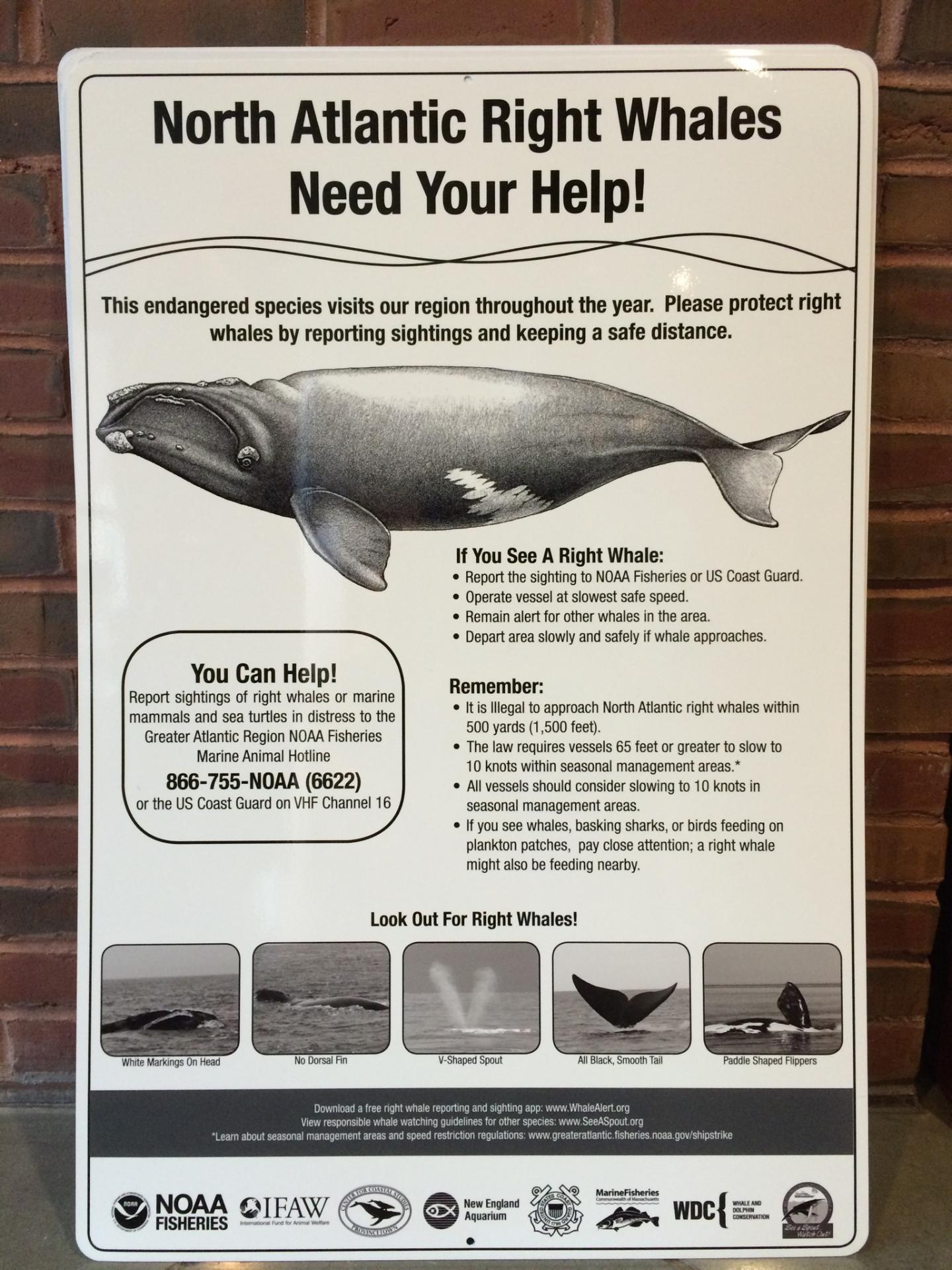This past week three members of the lab, Dana, Jessica and myself, travelled to New Bedford, MA to attend the 2015 North Atlantic right whale consortium meeting at theNew Bedford Whaling Museum. The right whale consortium is a group of individuals interested in the conservation of the highly endangered North Atlantic right whale, and it consists of academics, researchers, veterinarians, representatives from government and statement management agencies, non-profits, and students, and the meeting provides an annual opportunity for us all to come together and update the current status of the population, highlight ongoing research, and to discuss the current conservation issues and upcoming threats to the recovery of this species.

This meeting marks my 17th consortium meeting, and it has become a bit of a reunion of old friends and colleagues that I look forward to each year. This year marked the first that I was nominally ‘running’, as the current Chair of the North Atlantic Consortium Board. I have to say, despite being at 16 previous meetings, I neglected to notice the fine details of how the sessions worked and who made all of the announcements (turns out, the chair). So I got to do a lot of standing up to make announcements, like, “Please don’t bring food or beverages into the auditorium” and had the pleasure of thanking everyone who actually organized the meeting and made sure it ran smoothly, most notably the staff at the New Bedford Whaling Museum, Bob Rocha, and Heather Pettis, from the New England Aquarium. They made my job extremely easy and I got to enjoy the meeting as an eager audience member for the most part.
This meeting also marked another first for me, advisor to one of my student’s presenting their independent research to the consortium. Jessica gave an excellent presentation on her research investigating the individual distinctiveness of North Atlantic right whale “upcalls” and the potential for these sounds to aid in monitoring and detection (and counting!) right whales in the wild. Jessica did an outstanding job, and at the end of the meeting, I was very proud to announce that her presentation received the top score from a panel of judges, and that she would be receiving the NARWC Endangered Species Print Project Student Presentation Award.
This was a great end to a productive meeting and the lab is traveling back to Syracuse to dive back into more research next week.
– Susan
